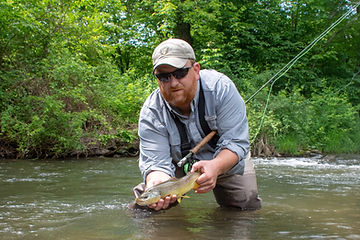Blue-Lining Fall Trout

Blue lines on a map typically represent streams or some other type of water, but to anglers they mean much more. In modern vernacular, these crooked little lines have come to symbolize a whole style of fishing. For some, “blue-lining” refers to a passion that leads anglers into remote places in search of native and wild trout.
Finding Places to Fish
Not every blue line on the map holds populations of wild Brook or Brown Trout, but I’m always surprised by how many do. Pennsylvania is home to almost 16,000 miles of wild trout streams, and counting. Every year, streams that have never been assessed are surveyed by crews of biologists to determine whether wild trout live there, and every year, the list of streams with thriving wild trout populations grows longer.
The PA Fish and Boat Commission website (www.fishandboat.com) is a great place to begin your search for productive blue lines. There you’ll find a county by county list of Class A and other wild trout waters that have been surveyed and are known to harbor trout. You can then cross-reference those streams with a map of the area to figure out access points.
But remember, there are thousands of miles of Pennsylvania streams that have never been surveyed. Just because you don’t see a stream on a list doesn’t mean there aren’t wild trout there. In fact, some of my favorite blue lines don’t appear on any list, and some of them aren’t even officially named. I found them by looking at maps and then taking a drive, and if they looked promising, I fished.
When I’m searching for a new stream to explore, the first thing I consider is the larger bodies of water in the region. Almost any small tributary feeding into an already stocked stream offers potential for wild trout. And if the larger stream has wild trout, then its tributaries will almost certainly have them, too.

I also consider the length of the tributary I want to explore. Shorter streams provide fewer options and may never get big enough to have the right type of holding water to support trout year-round. Generally speaking, I look for blue lines at least several miles in length that flow through heavily-canopied forests. Even better is if that blue line begins in higher elevation because the stream will typically have numerous plunge pools and undercuts as it flows down through a hollow.
How a blue-line stream appears in summer doesn’t always mean much come fall. One blue-line stream I enjoy fishing actually dries up in the middle of summer, but once water tables start coming up again in the fall, trout move up from the lower sections and I find fish in all the same pools and pockets that I always have.
Also, it’s not uncommon to find substantially larger trout in tiny, blue-line streams in fall when Brook and Brown Trout spawn. These breeders sometimes travel great distances to complete the cycle of life. The fry hatch and grow in the relatively protected tributaries until they’re large enough to make the journey downstream. In this way, many of these blue-lines are much more than just wild trout streams. They serve as nursery waters for many of the larger rivers and streams and are indicators of a watershed’s overall health.
Blue-Line Tactics
I don’t fret over fly choice. The trout that live in blue-line streams are generally opportunistic and seldom pass up a big, gaudy nymph or dry fly as long as the presentation is good.
If you have to enter the water at any point, chances are you’re already beat. The smaller the water, the more sensitive trout are to the vibrations on land, and especially to those on the streambed. All the more reason to walk slowly and avoid sudden movements.

It’s helpful if you can spot the fish before making your first cast, but that’s usually impossible. In larger rivers, where the water depth itself is a form of structure, trout can feel safe out in the open. Small stream trout don’t have that luxury. Typically, the first time you see them is as they bolt out from under a rock, log, or some other structure to either take your presentation or vacate the premises.
Sometimes you have to cover a lot of water to locate big fish that are accessible. In truth, many of the larger trout living in these diminutive dwellings are simply uncatchable because of the lairs they’ve chosen. Your only hope is to catch them in another part of the stream or after a rainstorm muddies the water enough to conceal your approach.
Consistent success in normal conditions usually means walking farther than most anglers are willing to walk. On some streams, pools can be pretty scattered and you have to cover a lot of ground to find holding water. However, it doesn’t take a lot of depth to harbor trout, but it does take structure, and wild and native trout use every bit of available structure to avoid predators.
In a way, exploring many blue-line streams is trout fishing in its purest form. It’s an opportunity to experience the natural beauty and wariness of streambred trout. The quest for these little gems can lead you into remote areas where few anglers have traveled and provide a sense of adventure and gratification. Blue-line trout fishing is a worthy pursuit.
____________________
Ralph Scherder is an award-winning writer and photographer from Coudersport, PA, whose works frequently appear in American Flyfishing, Fur-Fish-Game, Pennsylvania Angler & Boater, and many others.
